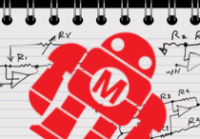Labs Report | Rome Maker Faire 2014

Rome Maker Faire 2014In the weekend of 3-5 October 2014 Rome’s second Maker Faire (European edition) took place. The faire was the closing event of the Innovation Week, “a place for innovators, coders, hackers, makers, futurists, financers, and anyone who has a story to tell about how the future could be”.
Rome Maker Faire 2014
In the weekend of 3-5 October 2014 Rome’s second Maker Faire (European edition) took place. The faire was the closing event of the Innovation Week, “a place for innovators, coders, hackers, makers, futurists, financers, and anyone who has a story to tell about how the future could be”.
There have been Maker Fairs in other European countries, but the one in Rome is probably the largest. 50,000 visitors were expected to drop by over the weekend and admire the more than 600 projects and demonstrations spread out over the Parco della Musica and its auditorium.
The projects presented by the makers –this is how hobbyists like you and me who make things in their spare time are called today– ranged from the fun and useless like a selfie-taking hairdryer to little robots, from art objects and tattoo printers to serious useful life-saving gadgets and were mostly open source, open hardware and non-profit oriented. However, the so-called pro-makers that want to earn a living out of making were represented too, trying to convince the visitors to buy or invest in their work. It is because of this group of people that large companies like Intel and Atmel have started sponsoring the maker movement, the idea being that one successful maker can generate a lot of sales for a company.
Since this Maker Faire was held in Italy it was not very surprising to see Arduino play an important role, with Massimo Banzi, one of the founders of Arduino, as one of the two godfathers of the event. The large Arduino shop and workshop strategically situated in the main hall attracted of course many people. Where Arduino boards and derivatives powered many a project, Raspberry Pi seemed completely absent. Then again, most projects needed only a little bit of computation power and as such small microcontrollers were sufficient.
Walking over the faire it was impossible not to notice the huge amount of 3D printers being present and being used. They were everywhere and in many forms, from Makerbots and Rep-Raps to strange contraptions capable of printing concrete or food. We could summarize this event as the 3D Maker Faire.
If all the 50,000 visitors did show up, we don’t know, but we do know that the event was a very lively one with people from all ages standing in line to buy tickets. The fun, frantic creative ambience, amplified by the sunny weather made it very hard not to get infatuated by the enthusiasm of the participants. Maker Faire 2015, here we come!
-------------------
Intel Edison
We saw the trend start about a year ago when Atmel and Freescale openly began to talk about hobbyists. Since then the hobbyists have evolved into makers – according to trend watchers and marketing people – and because some of them kickstarted themselves into successful businesses Intel too jumped on the bandwagon. Makers, and especially pro-makers (makers that make a living out of making), have become serious targets for big semiconductor manufacturers that now employ special managers to interact with the movement (even though hobbyists have been around forever, now that they are called makers they have become a movement and a community). Maker community managers have cool job titles like Maker Czar or Maker Guru and they wear beards and t-shirts. Because makers are considered cool the maker manager must be cool too.
Now that Intel has decided to take makers seriously they have charged their New Devices Group to start supporting the movement with easy-to-use tools and hardware. The goal is of course to get Intel products designed into pro maker projects that hopefully kickstart into iPhone-like block busters. One of these products is the tiny (35 x 25 mm) Edison board that was announced just before the Rome Maker Faire of which the company was also the main sponsor. It is a sort of smart successor sister cousin nephew to the Galileo board that has not (yet?) met with the success that was hoped for.
The little Edison looks a lot like the insides of a 5th-generation smartphone and it is probably not too complicated to make one with it. The electronics are completely shielded –the only visible parts besides the tin shields are a chip antenna, an SMA connector and a tiny high-pitch 70-pin extension connector– and on it is printed: “What will you make?” A good question.
The Edison is a very powerful computer module running Linux (Yocto Linux, anyone? The header photo at the site says it all) with integrated (and certified) Wi-Fi and Bluetooth. To use it you need a break-out board and currently there are two flavors: basic or Arduino. Together with the latter the Edison becomes a kind of Arduino Yun (not a commercial high flyer) that might interest the Arduino-minded maker. With the basic break-out board the Edison becomes a sort of competitor for the Raspberry Pi. You are supposed to prototype your application with the break-out board and when ready you integrate the Edison in your product. This is of course the clever part of the board; it was designed to be integrated in high-volume products which Arduino and R-Pi were not.
Intel sees an emerging market populated by pro makers that is definitely worth targeting with products like the Edison. The company wants to play the role of technology enabler and market extender and hopes to make a buck or two out of it. Or, as Intel’s Maker Czar Ray Malican resumed it during the Maker Community roundtable on the Rome Maker Faire: “Clearly it is getting bigger and surely we’re not going to miss it.”



Discussion (0 commentaire(s))